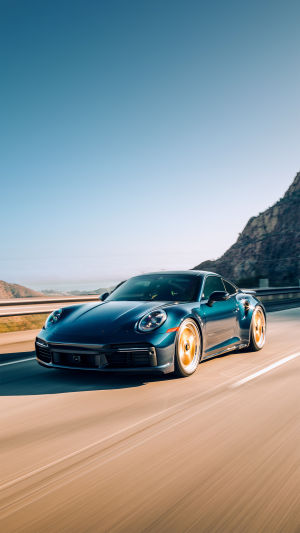Supercar generally refers to a sports car with high power output and outstanding appearance.
The price is generally up to more than 100,000 or even a million dollars. The top speed can be over 300km/h. Most of them contain only two seats. Supercar acceleration, braking, and handling are excellent. An extraordinary appearance is also essential.
In the mid-1960s, the British car magazine Car made the term "supercar" official in the modern car dictionary. But they were not the first to use the term. The editors of Car used the term to describe the infamous Lamborghini Miura, and it proved to be quite apt.
As far as we know, the term was first coined in an ad for a classic car, the Ensign Six - way back in the 1920s.
These cars are not famous for being in a particular country. They are known worldwide. Even though they were tuned differently in different places, they didn't make any difference in reputation or price because of that.
Besides, if you use these classics for your collection, there will be even less of a problem! It will not depreciate because of the different locations. Nor will they depreciate because of their age. On the contrary, anywhere, as time goes by, these collectable gems are worth a lot of money due to their rarity. Some people call them supercars. They are the fastest production cars in the world. They are designed for both speed and comfort as well as good looks. They are often produced in small numbers - perhaps a dozen or so. Or a few hundred - and it's not always possible to see them at a nearby auto show.
In the fastest top-of-the-line cars, the car can travel as fast on a straightaway as an aeroplane does on takeoff. These cars are rarely able to reach top speed. That's close to 402 kilometres per hour. Because in most places, such speeds are illegal. It is also dangerous.
Supercars are sports cars with a mid-engine layout, a high price tag, and excellent performance. But the price, as well as the performance, is relative to age. By and large, the performance of supercars is improving year by year.
So it is not correct to distinguish a supercar simply by its performance. But their performance will all be the benchmark of the time.
Due to the mid-engine layout, the vast majority of supercars are two-seaters. Some supercars will also have scissor doors, gullwing doors, butterfly doors, and other eye-catching designs. Supercars are usually launched in several racing editions, limited editions. Rarer and more expensive than the standard version.
The most expensive sports car
1963 Ferrari 250 GTO
A 1963 Ferrari Ferrari 250 GTO was sold in a private sale for a record $52 million, confirmed by three independent car dealers (the identity of the buyer was not revealed).
The previous record for the world's most expensive car, also held by Ferrari, was a 1962 light green car that changed hands for $35 million.
Over the past 30 years, Ferrari classic cars, if they are rare models and in good condition, have been trading at an average annual rate of 15%. The way things are going, within a few years, the Ferrari 250 GTO could be trading for over $100 million.
The 250 GTO was introduced by Ferrari in 1962 specifically for use in endurance racing. These included the famous 24 Hours of Le Mans, the Tour de France, etc. The track record is long. Only 39 of these cars were ever built.
Bugatti EB Veyron 16.4 Pur Sang
Price: US$2,000,000
One of the fastest cars in the world. This "purebred" special edition was produced in a limited edition of only five. Made primarily of aluminium and carbon fibre. Beautifully handcrafted. No one can beat its power.
Fastest Sports Car
SSC Ultimate Aero is the fastest production car to date, commonly known as the Bugatti killer. American supercar manufacturer this SSCUltimate Aero TT, with 411.76km / h of amazing top speed, breaks the current record held by the Swedish Koenigsegg CCR.
It took the title of "World's Highest Speed Production Car" in the Golden World Records.
The second generation of the ultimate aero was designed by the famous designer Jason Castriota. He has previously worked on the Maserati Birdcage and the Maserati Gran Turismo, and not long ago he worked on the Bertone Mantide.
Hennessy Viper GT
In 2014, the supercar Hennessy Viper GT broke the top speed record of 435.31km h, beating Bugatti.
In July 2015, San Francisco-based DM launched the Blade, the world's first 3D-printed supercar. The car is made of a series of aluminium "nodes" and carbon fibre tubes inserted and connected.
Easily assembled into a car chassis, and therefore more environmentally friendly. In addition, due to the light weight of the car, only 640 kg, the acceleration from zero to 60 mph (96 km/h) in two seconds. It easily ranks among the top sports cars.





